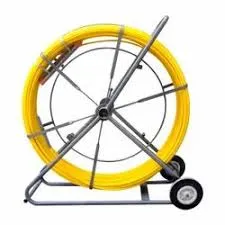
-
 Afrikaans
Afrikaans -
 Albanian
Albanian -
 Amharic
Amharic -
 Arabic
Arabic -
 Armenian
Armenian -
 Azerbaijani
Azerbaijani -
 Basque
Basque -
 Belarusian
Belarusian -
 Bengali
Bengali -
 Bosnian
Bosnian -
 Bulgarian
Bulgarian -
 Catalan
Catalan -
 Cebuano
Cebuano -
 Corsican
Corsican -
 Croatian
Croatian -
 Czech
Czech -
 Danish
Danish -
 Dutch
Dutch -
 English
English -
 Esperanto
Esperanto -
 Estonian
Estonian -
 Finnish
Finnish -
 French
French -
 Frisian
Frisian -
 Galician
Galician -
 Georgian
Georgian -
 German
German -
 Greek
Greek -
 Gujarati
Gujarati -
 Haitian Creole
Haitian Creole -
 hausa
hausa -
 hawaiian
hawaiian -
 Hebrew
Hebrew -
 Hindi
Hindi -
 Miao
Miao -
 Hungarian
Hungarian -
 Icelandic
Icelandic -
 igbo
igbo -
 Indonesian
Indonesian -
 irish
irish -
 Italian
Italian -
 Japanese
Japanese -
 Javanese
Javanese -
 Kannada
Kannada -
 kazakh
kazakh -
 Khmer
Khmer -
 Rwandese
Rwandese -
 Korean
Korean -
 Kurdish
Kurdish -
 Kyrgyz
Kyrgyz -
 Lao
Lao -
 Latin
Latin -
 Latvian
Latvian -
 Lithuanian
Lithuanian -
 Luxembourgish
Luxembourgish -
 Macedonian
Macedonian -
 Malgashi
Malgashi -
 Malay
Malay -
 Malayalam
Malayalam -
 Maltese
Maltese -
 Maori
Maori -
 Marathi
Marathi -
 Mongolian
Mongolian -
 Myanmar
Myanmar -
 Nepali
Nepali -
 Norwegian
Norwegian -
 Norwegian
Norwegian -
 Occitan
Occitan -
 Pashto
Pashto -
 Persian
Persian -
 Polish
Polish -
 Portuguese
Portuguese -
 Punjabi
Punjabi -
 Romanian
Romanian -
 Russian
Russian -
 Samoan
Samoan -
 Scottish Gaelic
Scottish Gaelic -
 Serbian
Serbian -
 Sesotho
Sesotho -
 Shona
Shona -
 Sindhi
Sindhi -
 Sinhala
Sinhala -
 Slovak
Slovak -
 Slovenian
Slovenian -
 Somali
Somali -
 Spanish
Spanish -
 Sundanese
Sundanese -
 Swahili
Swahili -
 Swedish
Swedish -
 Tagalog
Tagalog -
 Tajik
Tajik -
 Tamil
Tamil -
 Tatar
Tatar -
 Telugu
Telugu -
 Thai
Thai -
 Turkish
Turkish -
 Turkmen
Turkmen -
 Ukrainian
Ukrainian -
 Urdu
Urdu -
 Uighur
Uighur -
 Uzbek
Uzbek -
 Vietnamese
Vietnamese -
 Welsh
Welsh -
 Bantu
Bantu -
 Yiddish
Yiddish -
 Yoruba
Yoruba -
 Zulu
Zulu


TEL:
0086-311-88862036
lut . 08, 2025 06:02 Back to list
cable pulling winch
Navigating the myriad options for securing loads and lifting heavy equipment involves understanding the intrinsic qualities of shackles, and particularly, the critical role of screw type shackles. These components might be small in size, but they represent a cornerstone of rigorously secure and efficient mechanical operations in diverse industrial sectors.
Another key factor in their deployment is the environment in which they are utilized. Each application environment can present challenges such as corrosive elements, temperature extremes, and dynamic loads that threaten material integrity. For these situations, shackles constructed from specialized alloys or featuring protective coatings are recommended, as they better resist corrosion and maintain functionality in harsh conditions. From an expertise standpoint, the decision to use screw type shackles is often underscored by practical experience in load management and mechanical rigging. Industry veterans understand that the correct alignment, pin seating, and tension distribution are vital in maintaining optimal load handling efficacy. Training and experience are critical, facilitating sharper judgment calls and enhancing risk management in complex operational scenarios. Trustworthiness in screw type shackles is further established through adherence to industry standards and regulations. Reputable manufacturers ensure their shackles meet or exceed standards set by recognized bodies such as the American Society for Testing and Materials (ASTM) and the Occupational Safety and Health Administration (OSHA). Engaging with suppliers that provide certification and documentation of compliance represents best practice, reinforcing operational safety and efficiency. In conclusion, screw type shackles are indispensable in the industrial toolkit, blending efficiency, strength, and reliability. Their implementation, guided by expert application and rigorous adherence to safety standards, enhances operational success while mitigating risks associated with material handling. Companies and professionals prioritizing these attributes foster environments of safety and trust, amplifying both productivity and the integrity of their operations.


Another key factor in their deployment is the environment in which they are utilized. Each application environment can present challenges such as corrosive elements, temperature extremes, and dynamic loads that threaten material integrity. For these situations, shackles constructed from specialized alloys or featuring protective coatings are recommended, as they better resist corrosion and maintain functionality in harsh conditions. From an expertise standpoint, the decision to use screw type shackles is often underscored by practical experience in load management and mechanical rigging. Industry veterans understand that the correct alignment, pin seating, and tension distribution are vital in maintaining optimal load handling efficacy. Training and experience are critical, facilitating sharper judgment calls and enhancing risk management in complex operational scenarios. Trustworthiness in screw type shackles is further established through adherence to industry standards and regulations. Reputable manufacturers ensure their shackles meet or exceed standards set by recognized bodies such as the American Society for Testing and Materials (ASTM) and the Occupational Safety and Health Administration (OSHA). Engaging with suppliers that provide certification and documentation of compliance represents best practice, reinforcing operational safety and efficiency. In conclusion, screw type shackles are indispensable in the industrial toolkit, blending efficiency, strength, and reliability. Their implementation, guided by expert application and rigorous adherence to safety standards, enhances operational success while mitigating risks associated with material handling. Companies and professionals prioritizing these attributes foster environments of safety and trust, amplifying both productivity and the integrity of their operations.
Next:
Latest news
What Are Construction Tools and How Are They Used?
NewsJul.11,2025
Professional-Grade Duct Rodding Tools for Superior Cable Installation
NewsJul.11,2025
Enhancing Safety and Efficiency with Modern Hot Stick Solutions
NewsJul.11,2025
Empowering Cable Installation with Advanced Rodder Solutions
NewsJul.11,2025
Elevate Your Cable Installation Projects with Cable Pulling Tools
NewsJul.11,2025
Efficient Cable Handling Solutions: Cable Rollers for Sale
NewsJul.11,2025
Copyright © 2025 Shijiazhuang Bilo Import and Export Trading Co., Ltd. All Rights Reserved. Sitemap | Privacy Policy

BlLo lmport & Éxport is specialized in power and cable equipment andconsiruction tools,Qur main producis are FRP
duct rodder, cable rollerscable pulling winch, cable drum jack, cable pulling sock, etc.
Copyright © 2025 Shijiazhuang Bilo Import and Export Trading Co., Ltd. All Rights Reserved. Sitemap | Privacy Policy










